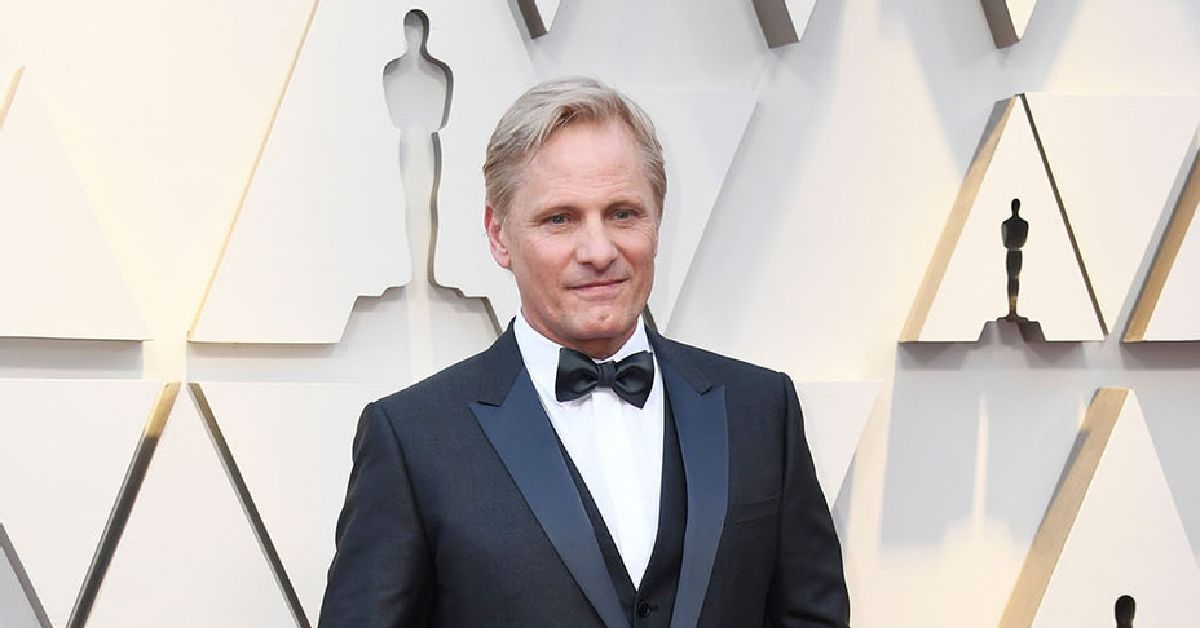Strider just made one big stride in Hollywood.
After playing Aragorn in the Lord of the Rings trilogy, Viggo Mortensen's career didn't slow down. In fact, it only got better and better with each role he's taken on. Since his time in Middle Earth, he's played a hippie father in Captain Fantastic and a wise-guy chauffer in Greenbook, which both earned him an Oscar nomination for Best Actor.
Now he's worth $30 million, and he's not stopping there. He's just made his directorial debut in the film Falling, in which he also starred, but he isn't going anywhere from our screens. Unlike some actors turned directors, Mortensen won't be putting on the One ring and disappearing behind the camera forever. We'll still be able to see him in great films.
In the meantime, while we wait for those great films, let's take a look at what attracted Mortensen to directing, and what it was like directing Falling.
He Wanted To Challenge Himself
Mortensen has a similar personality to the King of Gondor. They are both humble, soft-spoken people, but when a challenge arises they are both front and center, ready to fight. The only difference is that Mortensen isn't fighting an army of Orks, he's fighting stigmas and pushing boundaries in film.
Directing Falling, wasn't the first time Mortensen thought about going behind the camera. 25 years ago he wrote a script for a silent film set in Scandanavia (he's Danish), but he couldn't get it off the ground.
He continued to write films throughout his career, but it wasn't until 2015, after the death of his mother, who suffered from dementia, that he decided he wanted to write a story inspired by her and her struggles with the disease. Thus Falling was conceived.
"I was just trying to remember things about her and I started writing a story about some things I remembered, mostly feelings rather than facts," Mortensen told the Observer. "And it just became a fictional story. Falling was the first time I was able to find the financing and shoot [a film I’d written]. It took me a few tries, about four years before we did actually find just enough money to make it."
The film follows Mortensen's character, John Peterson, a gay man who notices that his homophobic father, Willis, played by Lance Henriksen, is starting to show signs of dementia. John tries to take his father back to California with him but he's stubborn and unwilling to change his way of life.
Mortensen was interested in the tension between the father and son, especially since they had such opposing views. Writing John as a gay man, interested Mortensen because it added another level of conflict between them.
"I’m not so big on messages," Mortensen explained. "And I’m not at all interested in giving answers to people or telling them what to think or feel. But I did want to explore some things. I wanted to pose questions rather than give answers. I wanted to ask myself, among other things, ‘Are there limits to communication? Are there people you can’t communicate with or who don’t deserve to be communicated with?’ I personally think you can always make an effort and that’s worthwhile."
Mortensen didn't originally see himself as John but thought that adding his name to the cast list ensured funding.
"We were very short on money to shoot, edit and make this movie,” Mortensen said. "As a producer, I could — and did — decide that the actor with some name value playing John would not have to be paid. And neither would the screenwriter or the composer or the director. That money could go into shooting the movie. But I would have never played if I thought I was in any way not right for it. The casting of this movie was, to me, crucial. I worked really hard on that. For this particular story, this was the ideal cast."
He brought in Henriksen, his Appaloosa co-star, and David Cronenberg, Mortensen's three-time director on films Eastern Promises, A History of Violence, and A Dangerous Method.
Mortensen's Film Isn't Like Any Other Actor Directed Film
Mortensen knows that a lot of actor-turned-director films end up bad, but that wasn't going to be the fate of his film. This was something that he'd been preparing for virtually his entire career, and he wasn't going to make a flop.
"Just because you’re an actor doesn’t mean that you’re going to be good at being a director, or that you’re even going to be good at directing actors," he explained. "It depends on what kind of actor you are and what kind of curiosity you’ve shown towards what other actors do and what everybody else does on a set to take that story from the page to the screen. If you’re curious, as I have been, you have maybe an advantage because I have some technical understanding."
During a "Close Encounters" talk in Rome, Mortensen said he'd learned a lot of lessons as an actor that helped him as a director.
First, that the director has to do most of the work before production starts. Second, you have to be present when making art, trust the camera, and make it a team effort. Preparation is key for projects big or small. Finally, you have to remember that it's not only about how you see the film, and most importantly, don't let embarrassment hold you back.
In Variety's review of Falling, they compared Mortensen's directorial skills to Clint Eastwood's later work. "Mortensen’s patience, his way with actors, and his trust in our intelligence are not unlike late-career Eastwood, which isn’t a bad place to be so early in one’s directing career."
So it seems as if we have another director to watch out for. Mortensen is already impressing everyone in the industry and we can't wait to see what he does next.

